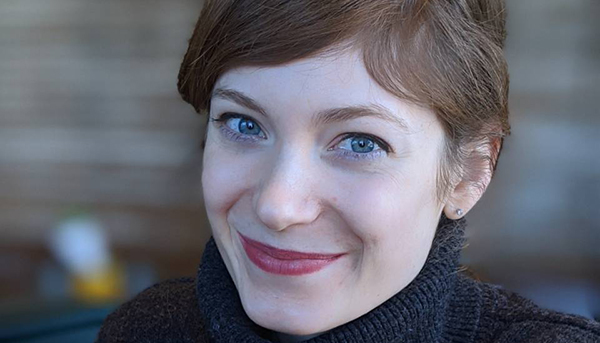
M.Ed. candidate and initial teaching license in second language education candidate Amber Bunnell is pursuing a license in both English as a second language and Japanese after experience teaching abroad. She shares how the program has helped her feel prepared to teach different ages and backgrounds anywhere in the world.
What drove you to enroll in the M.Ed. and initial teaching license program?
Before enrolling in the program, I had a lot of informal experience working in education and intercultural exchange. But the more experience I had in the classroom as an assistant teacher, the more I realized that I was lacking some fundamental knowledge. I didn’t have a strong theoretical understanding of second language acquisition, and students would often ask me questions about English grammar that I wouldn’t be able to answer or explain. I enrolled in the U’s program to gain the linguistic and pedagogical skills I needed to better serve my students.
When did you realize you wanted to be a teacher?
I have always had a passion for language and working with students, and thought about pursuing a career in education for a long time. I was lucky enough to have the opportunity to teach English in Japan for three years on the JET Program, and I loved every moment of teaching, even the challenging times! The deep relationships I formed with my students made it easy to decide on a career teaching. There was a moment during my first year in Japan that I realized my Sunday nights were no longer spent dreading going to work the next day like they’d been at past jobs. I think that feeling like you are excited to get out of bed and go to work in the mornings is a very good sign that you’re on a career path that’s right for you.
Has the student teaching helped you feel prepared to enter your own classroom?
Because I am a dual-licensure candidate, I will have student-taught in four different settings by the time I finish the program (elementary ESL, secondary ESL, elementary Japanese, and secondary Japanese). Student-teaching has been a valuable opportunity to apply the theory we learn through our coursework to the real-world setting of a classroom. It has given me a wide range of professional experiences – I’ve taught in elementary schools and high-schools, suburban schools and urban schools, lead sheltered classes and co-taught classes, experienced the IB diploma curriculum, and worked with a high-poverty student body and newcomers to the United States. After all these experiences, I feel confident and prepared to enter my own classroom.
What did you hope to gain from the program, personally and professionally?
I want to get my teaching license and master’s degree, of course, but I also wanted to gain a deeper understanding of linguistics, English grammar, and the theory behind second language acquisition and how that translates to the classroom. I also had never taught in a U.S. public school before, so I am excited about the opportunity to experience an American classroom while student teaching.
Were there any surprises and challenges along the way?
It seems obvious now, but it was surprising to me at first just how different every teaching position can be. Teaching a group of kindergarten English-language learners in suburban Bloomington is a completely different experience than standing in front of a Japanese class of 35 high school students in East St. Paul. Every school has a different staff culture and different student needs. I love the variety. It’s exciting that this degree offers so much flexibility, and the option to teach two different language in a variety of schools, anywhere in the world.
What has been your experience with the faculty?
The faculty have been an incredible source of support, resources, and inspiration. The directors of the program work closely with the cohort, teaching the majority of our classes and participating in group field experiences and observations. The faculty are not only professional mentors, but take the time to connect with each of us on a personal level.
How have you felt about the cohort model and experience?
My classmates have been an incredible source of support and encouragement. Because we are a small group that takes all of our courses together, it’s been easy to get to know people on a personal level. We’ve bonded over our classes at the U, our stories from school, and our shared interests. Though we vary in age and all come from a wide variety of life experiences, I feel like I’ve found a community of people who value the same things that I do – working with students, intercultural experiences, learning new languages, and advocating for social justice.
What do you hope to do after graduation?
I would love to work in English education in Japan, or with newcomers in the United States. One thing this program has taught me is that I would be happy teaching students of any level or age, so I see a variety of opportunities in my future!
Any other thoughts you want to share about your experience?
My personal experiences with speaking a second language, living abroad, and growing up as a first-generation student have informed every aspect of my teaching. I would highly encourage others who are considering a career in second language education to gain some experience both in the classroom, and in a culture different from their own, before enrolling in the program. Having my own first-hand experiences as an outsider and a non-native speaker has allowed me to deeply empathize with my students, which in turn has made me a better teacher.
Learn more about M.Ed. and initial teaching license program in second language education in the Department of Curriculum and Instruction.



